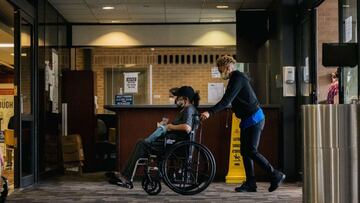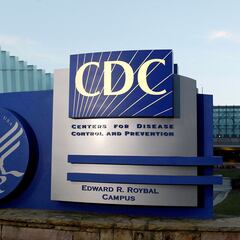Where in the United States is the deadly fungus Candida auris spreading fastest?
A drug-resistant fungus, Candida auris, presents an “urgent threat” according to the CDC. Where are cases rising?

Candida auris is a microorganism that is highly resistant to drugs and can be deadly for those who become infected. This type of fungus, which grows like yeast and is one of the few species of the genus that can cause candidiasis in humans, formed the subject of a study published on Monday by the US Centers for Disease Control and Prevention (CDC). The health authority reports a sharp increase in cases between 2019 and 2021.
Three times as many cases in less than three years
Along these lines, the experts have noted in their analysis an increase, specifically in those cases where drug resistance appears. The CDC has been able to collect and analyze this data thanks to partnerships with hospitals that have reported cases in their own facilities.
The results of the investigation have revealed a triple increase in cases in 2021 compared to the two previous years. In data, this explosion caused by Candida auris has led to an alarming growth in the percentage of infections, which, if it was 44% in 2019, in 2021 it has climbed to 95%.
CDC warns of increasing anti-fungal resistant fungus Candida auris (C. auris), considered an urgent antimicrobial resistance (AR) threat—spreading at an alarming rate in U.S. healthcare facilities in 2020-2021, & increasing in 2022, according to @CDCgov. Exacerbated by worsening… pic.twitter.com/bdcWu2lalF
— Eric Feigl-Ding (@DrEricDing) March 21, 2023
Where are cases rising the fastest?
Only twenty-eight states and the District of Colombia have reported cases of the fungus. Nevada (384), California (359), Florida (349), New York (326), and Illinois (276) have reported the highest number. However, the CDC reported at the end of 2022, states like Ohio and Texas were reporting a greater number of cases.
The increase is one of the consequences of the coronavirus pandemic
Related stories
In this way, experts have directly pointed to the weakness of the health system due to Covid-19 as the cause of the increase. Hospitals are the main sources of Candida auris infections, and some are still experiencing staff shortages. With fewer staff comes the greater risk that corners will be cut, which could lead to contaminated materials being used unknowingly. Within health centers, the patients who are most exposed to fungi infection are, according to the report, are those who spend the longest time hospitalized or those who are connected to mechanical ventilators.
Candida auris (C. auris), an emerging fungus considered an urgent antimicrobial resistance (AR) threat, spread at an alarming rate in U.S. healthcare facilities in 2020-2021, according to data from CDC published in @AnnalsofIM. https://t.co/2GWYzWd0lj pic.twitter.com/n2JEIQLDjS
— CDC (@CDCgov) March 21, 2023
Candida auris, described for the first time in 2009 was not detected in the North American country until 2016. Now, the CDC is warning that it represents an “urgent threat” due to its drug resistance and high mortality rate.


